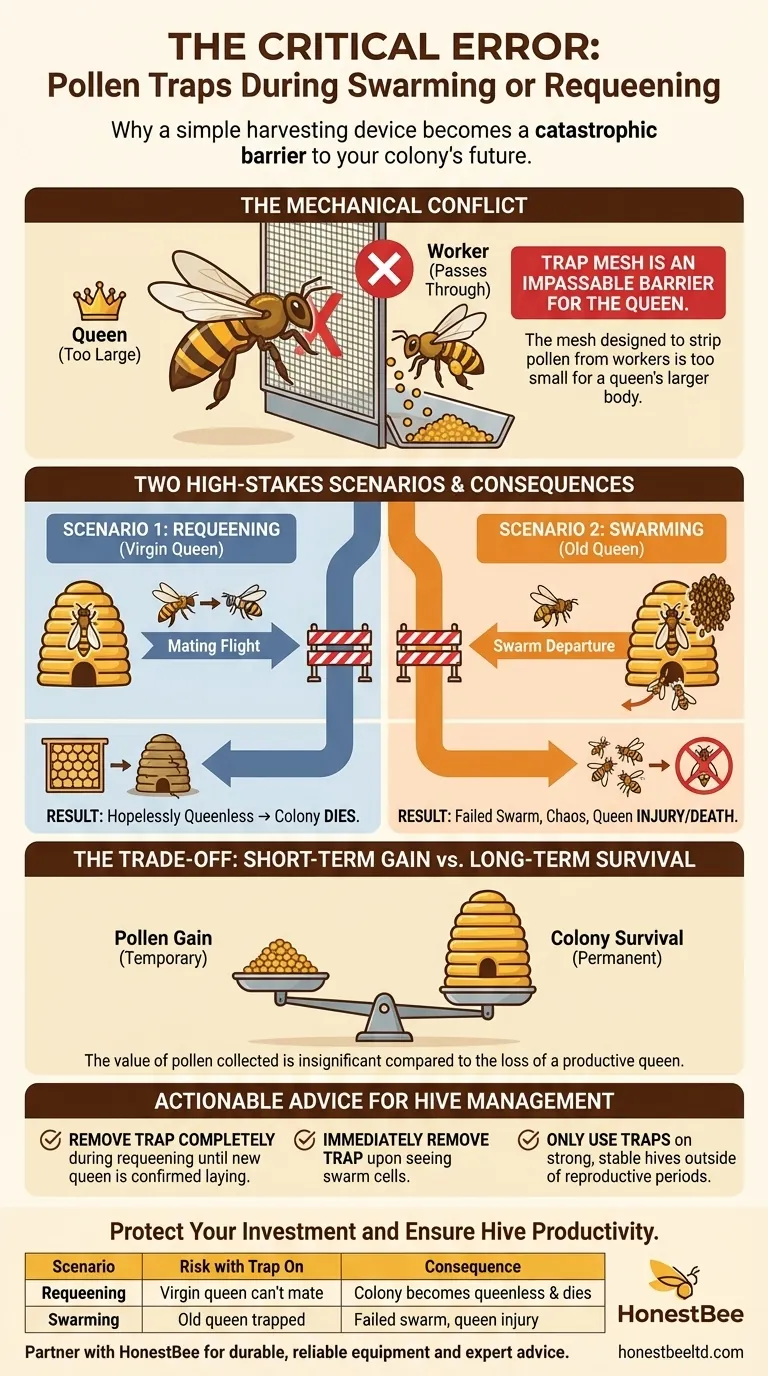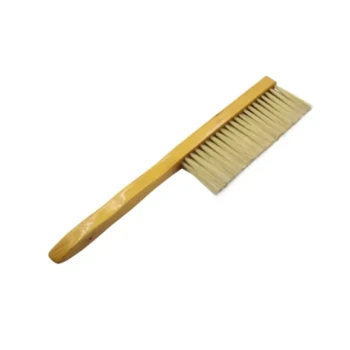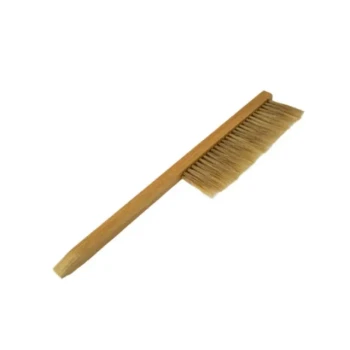Leaving a pollen trap on your hive during swarming or requeening is a critical error that can have catastrophic consequences for the colony. The mesh screen designed to harvest pollen from worker bees is too small for a queen to pass through. This can prevent a virgin queen from leaving on her essential mating flight or trap an existing queen inside during a swarm, ultimately risking the entire colony becoming queenless and non-viable.
The core issue is a mechanical conflict: the same hardware that makes pollen collection possible also creates an impassable barrier for a queen. Failing to remove the trap during critical reproductive events places short-term pollen gain above the long-term survival of the colony.

The Conflict: Queen Size vs. Trap Design
To understand the risk, you must first understand the distinct roles of the queen and the pollen trap's mechanics. They are fundamentally incompatible during certain periods of the hive's life cycle.
How a Pollen Trap Functions
A pollen trap works by forcing returning forager bees to crawl through a screen or mesh before entering the hive.
This mesh is sized perfectly to allow a worker bee to pass but is just tight enough to knock the pollen pellets off her hind legs. These pellets then fall into a collection tray below.
The Queen's Critical Journeys
Unlike worker bees, a queen rarely leaves the hive, but when she does, it is essential for the colony's survival and reproduction.
There are two primary scenarios for her exit: the mating flight of a virgin queen and the departure of a swarm with the old queen.
The Inevitable Blockade
A queen, particularly a mated one, is significantly larger than a worker bee. She cannot fit through the pollen trap's mesh.
This physical barrier turns the trap from a harvesting tool into a prison wall, directly interfering with the most vital functions of the hive.
Understanding the High-Stakes Scenarios
Leaving the trap on is not a minor inconvenience; it is a direct threat to the colony's existence. The consequences differ slightly depending on whether the hive is swarming or being requeened.
The Risk During Requeening
Many beekeepers requeen annually to maintain high productivity and reduce swarming tendencies. A successful requeening depends entirely on the new queen's mating flight.
If a pollen trap is on, the virgin queen cannot exit the hive to mate. The colony will wait, but after a few weeks, she will become too old to mate successfully. The hive becomes hopelessly queenless and will dwindle and die without intervention.
Alternatively, if she manages to exit through a small gap, she will be unable to re-enter through the main entrance and will be lost.
The Risk During Swarming
Swarming is the hive's natural method of reproduction, where the old queen leaves with roughly half the bees.
If a pollen trap is on, the queen cannot exit with the swarm. The swarm will issue from the hive but, upon realizing their queen is not with them, will return.
This can lead to confusion, repeated swarm attempts, and stress on the colony. In the chaos at the entrance, the queen can be damaged, "balled," or killed by disoriented bees.
The Trade-Off: Pollen Gain vs. Colony Survival
Your decision to use a pollen trap must always be weighed against the current state and needs of your colony.
The Value of Pollen
Pollen collection is a valid goal. It provides a valuable supplement to sell or to feed back to your colonies during a pollen dearth, boosting brood production and overall health.
The Irreplaceable Queen
A healthy, mated, and laying queen is the single most important asset in any colony. She is the source of all future bees, and her presence dictates the hive's stability, temperament, and productivity.
The value of any pollen you could collect over a few weeks is insignificant compared to the value of a productive queen and the thousands of bees she represents.
Making the Right Choice for Your Hive
Timing is everything. Using a pollen trap is perfectly safe on a stable colony, but it must be removed during periods of reproductive change.
- If your primary focus is requeening: Remove the pollen trap completely until you have visually confirmed the new queen is mated and has a consistent egg-laying pattern.
- If your primary focus is managing a swarm: Immediately remove the pollen trap as soon as you see swarm cells to allow the natural process to occur or to perform a split.
- If your primary focus is pollen collection: Only attach the trap to a strong, stable hive with a proven, laying queen well outside of the main swarm season.
Prioritizing your queen's safety during these critical periods is the most important investment you can make in your colony's long-term success.
Summary Table:
| Scenario | Risk with Pollen Trap On | Consequence |
|---|---|---|
| Requeening | Virgin queen cannot leave for mating flight. | Colony becomes hopelessly queenless and dies. |
| Swarming | Old queen is trapped inside during swarm exit. | Failed swarm, queen injury/death, hive chaos. |
| Key Takeaway | The pollen trap mesh is an impassable barrier for a queen. | Short-term pollen gain is never worth losing the colony. |
Protect Your Investment and Ensure Hive Productivity
As a commercial beekeeper or distributor, your queen's safety is paramount to your operation's profitability and stability. A single error in timing with a pollen trap can lead to significant losses.
HONESTBEE supplies the durable, reliable beekeeping equipment you need to manage your hives effectively and avoid costly mistakes. We understand the precise timing required for successful hive management.
Let us help you equip your apiary for success. Contact our wholesale experts today to discuss your needs for pollen traps, hive tools, and other essential supplies designed for commercial-scale operations.
Visual Guide

Related Products
- HONESTBEE Advanced Ergonomic Stainless Steel Hive Tool for Beekeeping
- Professional Dual-End Stainless Steel Hive Tool for Beekeeping
- Professional 3-Bar Frame Grip with Integrated Hive Tool
- Wooden Bee Brush with Triple Row Artificial Fiber for Beekeeping
- Full Set Beekeeping Electronic Bee Venom Collector Machine Device for Bee Venom Collecting
People Also Ask
- What are the features of a regular hive tool? The Essential Multi-Tool for Every Beekeeper
- How is a hive tool used for scraping and cleaning? Master Hive Maintenance for a Healthy Colony
- Why is it important to compare the progress of different hives? A Beekeeper's Key Diagnostic Tool
- What tools are used for cleaning frames? A Beekeeper's Simple 4-Tool Guide
- What is a hive tool and what are its uses? Master Your Hive Inspections with the Essential Beekeeper's Tool



















